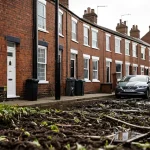Overview of Current Eco-Friendly Home Design Trends in the UK
Small
Eco-friendly home design UK has gained significant momentum as sustainable living UK becomes a priority across the country. Key eco-friendly home features now widely embraced include improved insulation using natural materials, energy-efficient glazing, and renewable energy integrations like solar panels. These trends reduce carbon footprints and lower energy costs, making green home trends increasingly attractive to homeowners and designers alike.
In the same genre : How can UK homeowners create a minimalist living space?
The growing demand for sustainable living UK solutions reflects heightened awareness of environmental impact. Homeowners are prioritizing eco-friendly home design UK choices that provide comfort without compromising the planet’s health. Designers are responding by incorporating passive solar heating, rainwater harvesting systems, and biodegradable finishes into their projects. Green home trends also emphasize smart technology to optimize energy use.
For eco-conscious residents, these trends offer practical benefits. Adopting eco-friendly home design UK lets individuals contribute to sustainability goals while enhancing quality of life. As green home trends evolve, they set new standards for both urban and rural housing developments, promoting a future where environmental responsibility and modern living coexist seamlessly.
Also to see : How can UK home living trends enhance your interior design?
Popular Sustainable Materials and Resources in UK Homes
When considering sustainable building materials UK, many homeowners are turning to recycled materials for homes to reduce environmental impact. These include reclaimed wood, recycled metal, and repurposed bricks, which cut down on waste and lower carbon footprints effectively. Using such materials not only conserves natural resources but often enhances the uniqueness of a home’s character.
Low-impact resources are equally vital in eco-friendly construction. For example, locally sourced timber helps reduce transportation emissions and supports regional economies. In addition, natural insulation materials like sheep’s wool, hemp, or cellulose provide excellent thermal performance while maintaining breathability, improving indoor air quality. Using eco-paints free from harmful volatile organic compounds (VOCs) further enhances health and sustainability.
Several UK brands now specialise in sustainable materials, supplying everything from recycled flooring to natural plasters. Selecting from these suppliers makes it easier to integrate low-impact resources into building projects. These choices not only align with environmentally conscious building standards but also comply with increasingly stringent UK regulations aimed at reducing carbon emissions in residential properties.
Energy Efficiency and Renewable Technologies
Energy-efficient homes UK are increasingly adopting renewable energy technologies to meet sustainability goals. Key integrations include solar panels, heat pumps, and green roofs, which reduce reliance on fossil fuels and lower carbon footprints. Solar panels harness abundant sunlight, providing clean electricity and cutting energy bills. Heat pumps offer efficient heating and cooling by transferring heat rather than generating it, significantly reducing energy consumption.
Smart home solutions sustainability focuses on optimizing energy use through intelligent management systems. These systems monitor and adjust energy consumption in real time, ensuring appliances run during off-peak hours or when solar power is abundant. Such smart energy management systems not only enhance comfort but also maximize savings and environmental benefits.
Compliance with UK energy regulations and incentives encourages homeowners to embrace these technologies. Government schemes and standards support energy-efficient homes UK, offering rebates or tax breaks for installing renewable technology. Together, these measures push the market towards greener homes, emphasizing both economic and ecological advantages for consumers.
Water Conservation and Indoor Air Quality
Small
In modern eco homes across the UK, water conservation plays a pivotal role. Installing rainwater harvesting and greywater recycling systems allows households to reduce their reliance on mains water. These eco plumbing solutions capture rainwater or recycle water from baths and sinks, which can then be used for flushing toilets or irrigation. This approach significantly cuts overall water consumption while promoting sustainable living.
Complementing water recycling, low-flow fixtures such as taps, showerheads, and dual-flush toilets are essential. These devices minimize water usage without compromising comfort, ensuring homes maintain efficiency throughout daily activities.
Indoor air quality in eco homes benefits greatly from non-toxic finishes like low-VOC paints and natural sealants. These materials reduce harmful emissions, creating healthier living spaces. Additionally, advanced ventilation systems, often integrated with heat recovery units, improve air circulation while conserving energy. Together, these practices boost indoor air quality eco homes strive to achieve, providing occupants with fresher, cleaner air that supports wellbeing and reduces environmental impact.
Embracing these innovations offers a practical, holistic strategy for sustainable homes prioritizing both resource conservation and indoor environmental health.
Popular Eco-Friendly Design Practices and Certifications
Eco home certifications like Passivhaus UK and BREEAM have become prominent markers for sustainable building. Passivhaus UK focuses on ultra-low energy consumption by enhancing insulation, airtightness, and heat recovery. This approach dramatically cuts heating and cooling demands, reducing carbon emissions over a building’s lifespan.
BREEAM certification assesses a building’s environmental performance across energy, water, materials, and waste management. It encourages builders to consider the full lifecycle of materials and the long-term carbon footprint. Combining lifecycle assessments with these certifications ensures homes meet stringent eco-friendly standards.
UK sustainable building regulations now reflect an increasing government commitment to carbon neutrality. Regulations mandate energy efficiency, renewable energy use, and sustainable material sourcing. Initiatives like the Future Homes Standard require new builds to significantly reduce emissions, promoting widespread adoption of Passivhaus principles and eco home certifications in construction.
Embracing these practices helps homeowners comply with regulations while supporting broader environmental goals. The integration of Passivhaus UK standards, eco home certifications, and evolving regulations offers a clear roadmap toward truly sustainable, energy-efficient homes.
UK-Based Case Studies and Local Expert Recommendations
Discovering award-winning eco homes in the UK offers invaluable inspiration for sustainable living. Notable examples showcase innovative use of renewable materials, energy-efficient systems, and designs tailored to the British climate. These homes demonstrate practical applications of green technologies, such as advanced insulation and solar panels, reducing carbon footprints while maintaining comfort.
Local architects and sustainability consultants provide expert advice crucial to achieving genuine eco home success. They emphasize passive design principles, like orientation to maximize natural light, alongside integrating rainwater harvesting and smart ventilation. Their recommendations often prioritize sourcing materials locally to boost sustainability and support communities.
For those seeking specific guidance or products, numerous resources exist across the UK to help locate eco-friendly materials and services. From reclaimed timber specialists to low-impact heating system providers, local networks can connect homeowners to trusted suppliers. Using a regional approach ensures that solutions are well-suited to the UK’s unique environmental and regulatory context, enabling truly effective eco renovations or builds.
By combining UK eco home inspiration with expert insights, homeowners can confidently pursue sustainable living tailored to their area’s distinctive needs.






